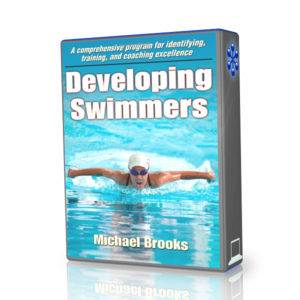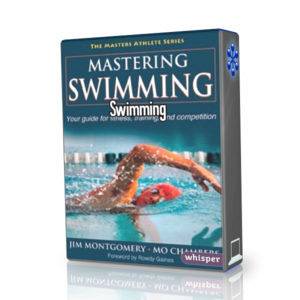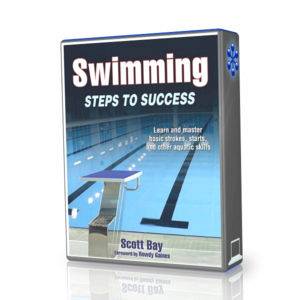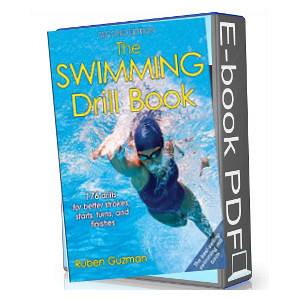A well-coordinated butterfly is a thing of beauty. The swimmer appears to move effortlessly through the water. Truly, a successful butterfly is less a matter of strength, and more a matter of a coordinated sequence of stroke actions. When the body position, dolphin action, arm stroke, recovery, breathing and leverage work together, the result is a butterfly that moves forward with rhythm, grace and power. The goal of the following coordination drills for butterfly is to practice the various actions of the butterfly in sequence so they benefit stroke as a whole, and improve the forward line of the stroke.
Chest Balance
THE PURPOSE OF THIS DRILL
- Benefiting from the downhill position
- Avoiding a flat butterfly
- Bringing momentum into the next stroke
HOW TO DO THIS DRILL
- Step 1 : - Push off the wall preparing to do the butterfly. Achieve a straight spine, firm core and high hips. Sweep through and at the highest point in the stroke, take your breath. Recover, swinging your arms around and forward from the core. Notice that the breathing action is almost automatic. Perhaps because breathing is a matter of survival, it is a stroke action that we perfect early on.
- Step 2 : - Take another stroke, and breathe when your upper body reaches its highest point. Freeze in that position. Notice that your forward motion quickly stops. While we are good and practiced in achieving the breath, it is the part of the stroke after the breath that deserves attention in terms of maintaining the momentum and forward line of the stroke.
- Step 3 : - Stroke again. Accelerate through, breathe, and recover. Notice that it takes deliberate action to get back to the downhill position. You have to actively to angle your upper body correctly, or you will end up flat, and without momentum for the next stroke. Try it again. Sweep through to the breathing position, then recover, actively regaining your downhill position, using your core and shoulders. Drop your chest down and lean downhill. At this moment, your hips should be higher than your head. It should feel like you are balancing on your chest as you reach forward into the next stroke. Notice that by doing so you carry momentum with you into the next stroke.
- Step 4 : - Take another stroke. Accelerate through, breathe, then deliberately use your core and shoulders during recovery to transition to the downhill position. Press your chest down and balance on it, feeling your body ride downhill. Stretch forward and begin the next stroke. Continue swimming butterfly for several strokes, focusing on achieving this chest balance point before beginning the next stroke. Rest, then practice again.
- Step 5 : - Practice until balancing on your chest is as automatic as breathing.
DRILL FEEDBACK CHART
| Problem | Modification |
| I don't feel like I am riding downhill when I balance on my chest. | Make sure your hips are high throughout the stroke. At the point when you are balancing on your chest, your hips should actually be higher than your head. |
| I end up very deep when I balance on my chest. | Make sure you are not riding downhill for too long. Maintain your forward momentum by balancing on your chest only for a moment as you move into your next stroke. Otherwise you will have to use your arm stroke to lift yourself to the surface rather than to move forward. |
| This means that at entry, my chest is lower than my hands. | Exactly. Just for a moment, balance on your chest as you achieve your maximum reach and best alignment, then move into the next stroke from a position of strength. |
Coordination Checkpoint
THE PURPOSE OF THIS DRILL
- Coordinating the arms, legs and breathing
- Using momentum and leverage
- Achieving effortless breathing
HOW TO DO THIS DRILL
- Step 1 : - Push off the wall for the butterfly. Sweep through the arm stroke, maintaining high, firm elbows. Sweep your hands closer together under your belly, then accelerate toward the rear. As you press quickly outward in a J, feel your feet snap down and your face rise. Inhale. Notice three stroke actions happening simultaneously: the finish of the arm stroke, the inhale, and the down-beat of the second kick.
- Step 2 : - Try it again. Sweep through the arm stroke, round off the finish as your feet snap down, and you achieve the high point in the stroke to inhale. Try it for several strokes in a row, focusing on the point when these actions happen at once.
- Step 3 : - Notice that as these three actions happen at the same time, you can observe yourself surging forward through the water. Try it again. As your finish the stroke, and snap your feet down, look down at the water while inhaling. Notice your significant forward motion at this point.
- Step 4 : - This is an excellent checkpoint for stroke coordination as you swim butterfly for any length of time. If the down-beat of your kick, the finish of your arm stroke, and your inhale do not happen together, the rhythm of the stroke suffers.
- Step 5 : - Rest, then practice again, focusing on the coordination checkpoint every few strokes.

DRILL FEEDBACK CHART
| Problem | Modification |
| I can't do this because I don't breathe every stroke. | Check your coordination on your breathing strokes. |
| My kick happens before my inhale. | Hold your kick until your arms are near the finish of the stroke so you can breathe at the natural high point of the stroke. |
| My inhale happens after my stroke finishes. | It is important to breathe with the end of the stroke to create a unified forward line in the stroke. Otherwise, your face will be moving back as your arms are moving forward, slowing you down. |
Quiet Butterfly
THE PURPOSE OF THIS DRILL
- Achieving a clean entry
- Directing the stroke forward
- Swimming butterfly with the water, not against it
HOW TO DO THIS DRILL
Step 1: Stand in waist deep water. Bow forward until your chin rests on the surface of the water. Extend your arms forward aligned with your shoulders. Do four butterfly arm strokes and recoveries with your feet on the bottom of the pool, watching your point of entry in front.
Step 2: Look the splash that results as your hands enter. Notice the direction that the splash goes. This will tell you where your stroke is directed, and if you are swimming with the water or against it. Is the splash from your left arm crashing into the splash from your right arm? If so, you are directing your stroke side-ways, not forward. Is the splash from your hands going straight up? If you are directing your stroke down, not forward.
Step 3: Try it again. Stand in the water and bow forward. Do four complete strokes watching your entry. Aim each stroke forward at the end of recovery. At entry, lay your hands on the water, and slide them through the surface as you extend. Notice that the splash you make is minimal, and it is directed forward. Practice again, moving your arms with the water, not against it. Enter the water cleanly, displacing a minimum of water, and only in the forward direction.
Step 4: Now try it while swimming. Push off the wall for the butterfly. Do four stroke cycles focusing on directing each new stroke forward at entry. At the end of recovery, lay your hands quietly on the surface of the water. Slide them through the surface, fingertips first as you extend. Anchor your hands just below the surface of the water as your feet snap down. Sweep through and bring the momentum of your stroke and second dolphin into the recovery.
Step 5: At the end of recovery, reach forward to a Y, not to the center. Slide your hands into the water without a sound, and extend and take hold of the water right under the surface, not more than a few inches deep. Direct all actions of the stroke to move you forward, quietly using the water, not fighting it.

DRILL FEEDBACK CHART
| Problem | Modification |
| I have to slow my stroke down to enter the water without splashing. | At first you might have to slow down, but as you perfect your forward line you will be able to increase speed. Use the dolphin to provide momentum, then direct that momentum forward. |
| My hands go deep at entry. | Drop your chest down as you stretch your arms forward. Attempt to make no splash as you enter by laying your hands on the surface of the water. |
| My hands aim to the center at entry. | Try straightening your elbows as your reach forward in the recovery. Reach for the Y' with your thumbs. |






